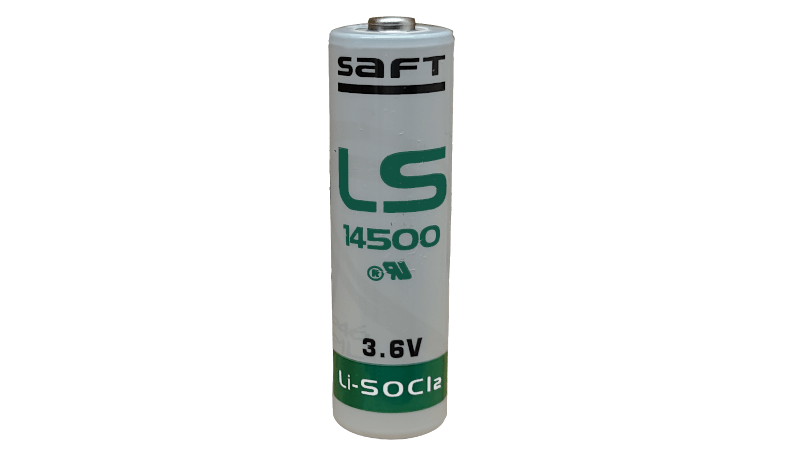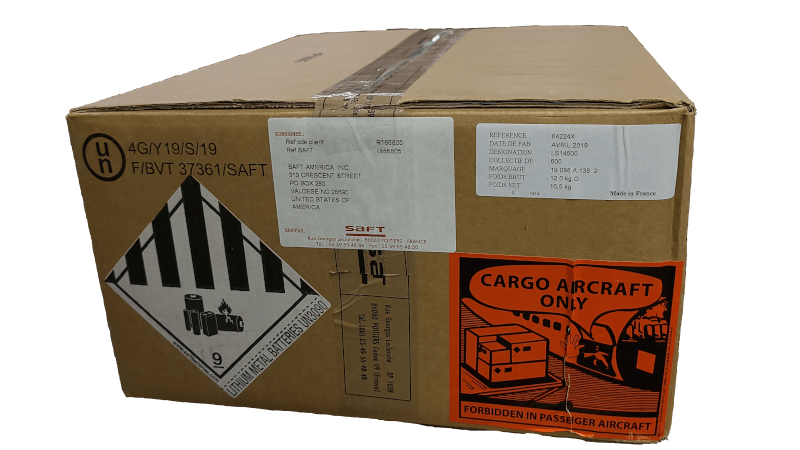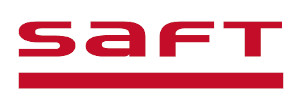


Saft LS14500
SKU: LS14500
Price: $325.00 (only $6.50/battery)
Pack of 50
Key Features
- High capacity and high energy (1122 Wh/l and 520 Wh/kg)
- High voltage response, stable during most of the lifetime of the application
- Wide operating temperature range (-60°C/+85°C)
- Low self-discharge rate (less than 1 % per year of storage at +20°C)
- Superior resistance to corrosion
- Low magnetic signature
Physical Construction
- Bobbin construction
- Well controlled passivation
- Hermetic construction with glass-to-metal seal
- Stainless steel container
- Non-flammable electrolyte
- RoHS and REACH compliance
- Made in France, China, UK
Our Saft LS-14500 Review
Works Great With:
- Utility metering
- Internet of Things
- Tracking Systems
- Alarms and security
- Connected sensors
- Medical devices
Downloads
Spec Sheet:
Saft LS14500 Specification Sheet
MSDS (Material Safety Data Sheet):
Saft LS14500 Material Safety Data Sheet / Article Information Sheet
Saft Lithium Handbook / Application Manual:
Specifications
Cell Size
AA
Voltage
3.6
Capacity
2.6Ah
Cell Construction
Bobbin
Pulse Capability
Typically up to 250mA
Max Continuous Current
50mA
Max Pulse Discharge Rate
0.25A
Dimensions
14.55x50.28mm (0.575x1.98in)
Weight
17g (0.6oz)
Lithium Metal Content
approx. 0.7g
Termination
Flat Contact (button-top)
Operating Temperature
-60°C to 85°C (-76°F to 185°F)
Storage Temperature
+30°C (+86°F) max
Shelf Life
Saft lithium-thionyl chloride batteries have a low self-discharge rate of less than 1% per year in storage at +20°C). The storage area should be clean, cool, dry and ventilated.
Transportation
Please refer to the Battery Information Sheet / Material Safety Data sheet. Batteries are ARTICLES according to REACH and OSHA and are not required to produce an MSDS.
Warnings
Fire, explosion and burn hazard. Do not recharge, short circuit, crush, disassemble, heat above 100°C (212°F), incinerate, or expose contents to water. Do not solder directly to the cell (use tabbed cell versions instead).